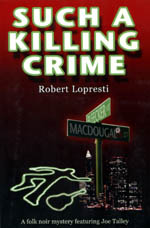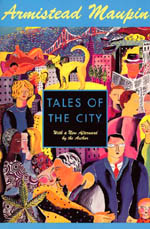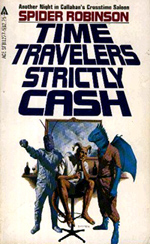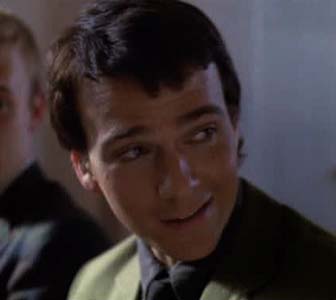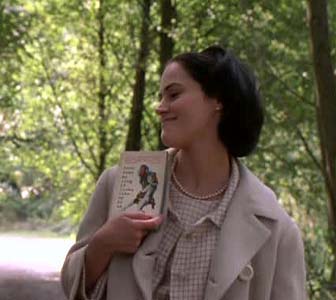ALLUSIONS IN SONGS:
"Down So Long"
by the Grateful Dead
(unreleased)
The early Grateful Dead had a song called "Down So Long" which they
performed at concerts in 1966. It's hard to tell if this song is raally
about Fariña's novel, but considering the time frame and their location in the Bay Area, it seems likely.
The Deadhead's Taping Compendium
describes this song as "definitely a dud." You can find the song on YouTube.
The lyrics can be found here:
https://www.dead.net/song/down-so-long
|
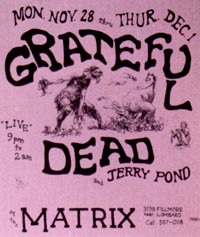
|
"Been Down So Long"
from the album, L.A. Woman (1971) by The Doors.
Jim Morrison often based his songs on favorite books. For instance,
"I'm a spy in the house of love," which is the first line of the song "The Spy,"
was from a novel by Anais Nin, and "Ship of Fools" was a novel by Katherine
Anne Porter. Morrison might have borrowed the phrase "been down so long it looks
like up to me" directly from the Furry Lewis song, "Dry Land Blues," but it's
also possible that he had Fariña in mind. It is reported in several sources that
Morrison had read and admired Fariña's
novel (see No One Here Gets Out Alive by Jerry Hopkins and Daniel Sugerman
and Wild Child: Life With Jim Morrison by Linda Ashcroft.) However, the
lyrics don't have much of a connection to Gnossos.
|
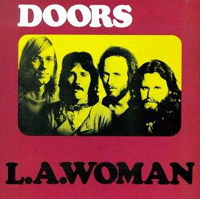
|
"Distant Cannon Fire"
from the album, Dark Blonde (1976) by Tom Jans.
This song contains the phrase "child of darkness":
Why in the world did they bring me here
So near to the fire
The sins of the fathers have gone
But still they call me a liar
A child of darkness may never get much higher.
I asked Geoff Gough, an authority on Tom Jans, if he thought this was an allusion to Fariña's "Children of Darkness,"
and this is what he said:
"I met Tom Jans just once and of course I never asked him if the
line was a Farina reference when he talked about the song. My
guess (without any evidence to back it up) is that it was a totally
subconcious reference used by Jans. He and Mimi did indeed sing
"Children of Darkness" together in concert in 1971/1972. Tom Jans
did value "Distant Cannon Fire" and talked to me at length about
Spain and Franco. There are other Spanish Civil War references on
Dark Blonde. Many who met Jans asked about Richard and I believe
he always tried to be gracious. He was with me when he used his well
rehearsed witty line "different size of shoes"; but I think he
always wanted to be his own man."
|
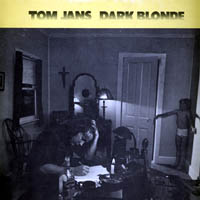
|
"Cracked and Crumbled"
from the album, Looks Like Up (2001), by John Train.
Richard Fariña is briefly mentioned in the lyrics:
"been down so long, looks like up to me"
richard farina, 1963
then his rear axle locked and he died all crumpled up upon the ground
1963 presumably refers to the Dick Fariña &
Eric von Schmidt where the phrase "been down so long..." is sung (although
it was actually Eric singing!).
|
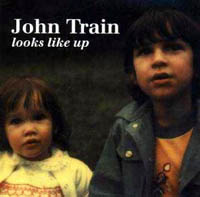
|
"Leaving the Monopole"
from the album, Matinee Idol (2009), by Ominous Seapods.
The song has a chorus consisting of the line "Been down so long it looks like up to me." You can hear the song on
Youtube:
https://www.youtube.com/watch?v=WHsYGpPNV5s
|
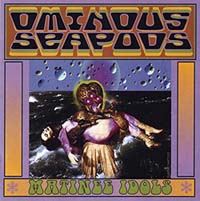
|
ALLUSIONS IN BAND NAMES:
|
Children of Darkness
This short-lived band from Oblong, Illinois only released one 45,
"She's Mine"/Sugar Shack A-Go-Go" (Royce 5140) in 1966. Considering the year, it's
not unlikely that the band named themselves after the song by Fariña. Both sides of the single can
be found on Youtube.
|
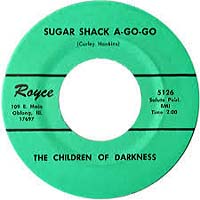
|
Birmingham Sunday
This band seems to have released only one album: Message from Birmingham Sunday, in 1968,
on the All American Record label. In 1999 it was released on CD on Vanguard's Italian label,
Akarma. The style is very much 1968 pop-psych, with no particular resemblance to Richard
and Mimi.
|
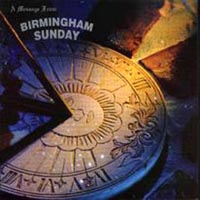
|
|
ALLUSIONS IN NON-FICTION BOOKS:
Mezcal
by Charles Bowden.
University of Arizona Press, 1988.
The blurb on the jacket describes it as "A book haunted by the ghosts of Richard
Fariña and Jack Kerouac." Although it is a travel memoir, the book reads more like
a novel. It evokes the wanderlust of the rucksacking days of the
sixties, roaming through midwestern towns, southern deserts, and Mexican pueblos.
Here are the author's comments on Fariña (page 20):
"We are in a dark room and outside I hear the hum of
Guadalajara traffic.... The phonograph plays Richard
Farina, dead that very spring from a motorcycle
accident. We treasure his book, Been Down So Long It
Looks Like Up To Me, because it makes perfect sense. I
lie on the bed and listen to "Reflections On A Crystal
Wind" and assume it must be about Methedrine.
Everything is drenched in chemicals and we all know
and enjoy this fact."
|

|
Life Inside: A Memoir
by Mindy Lewis
Atria Books, 2002
As a rebellious teenager in 1967, Mindy Lewis was committed to a psychiatric hospital
when her mother caught her taking drugs. In this memoir, she describes her
experiences there, as well as her reading habits:
"We read with a vengeance, absorbed in worlds and lives more compelling or cool,
amusing or tragic than our own. Richard Fariña's novel, Been Down So Long It
Looks Like Up To Me, has obvious appeal. Ted sometimes reads aloud a
particularly hilarious or bizarre paragraph, so that Fitzgore and Heffalump become
familiar characters even before I read Fariña's book. We appreciate the bizarre,
the arcane..."
|

|
How Adam Smith Can Change Your Life
by Russ Roberts
Portfolio / Penguin, 2014
An economics professor riffs on Adam Smith's lesser-known work, The Theory of Moral Sentiments, in a
modern self-help book. In the chapter "How Not to Fool Yourself" the author discusses Joan Baez's decision, upon learning of
Richard's death, to continue her European tour instead of going back to California to comfort Mimi and attend the funeral
(pages 53-55, 63-64). He explains that Joan's rationale--that Richard would have wanted her to soldier on through the
tour and share his music with her audiences--is an example of self-delusion, specifically the belief that one is doing a
favor for others when one is doing it for oneself, as when people say on the phone "I'll let you go" when they
themselves want to get off the phone. It's an interesting discussion, but the passage is too long to quote in its
entirety, so, uh... I'll let you go.
|
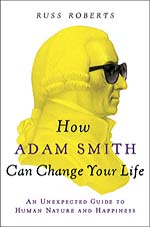 |
"Suburban Monastery Death Poem," by d.a.levy.
The poem contains an allusion to "Richard Farina's ghost":
Eden (1996)
Written and directed by Howard Goldberg.
Set in a New England prep school in 1965, the drama concerns a rebellious teen named
Dave (Sean Patrick Flanery) who is in love with his teacher's wife (Joanna Going). He is an intelligent but
failing student who is
interested in creative writing and is a fan of Richard Fariña. Fariña is mentioned several times in
the movie, and at one point you can even see a copy of Been Down So Long It Looks Like Up To
Me (anachronistically, it's the Dell paperback, first published in 1967). In another scene, one can
just barely hear "The Falcon" playing
very quietly in the background. Writer/director Howard Goldberg captures the
Fariña spirit quite
well through this character, who embraces many of the same themes:
rebellion; the quest for spiritual fulfillment; floundering, and philandering.
|

|
Slacker (1990)
Written and directed by Richard Linklater
Towards the end of this stream-of-conscience movie, a man in a bar delivers a
monologue about people who were buried by history, and he mentions
Richard Fariña:
"That's because they could fuck and think at the same time. So history buried them.
It buries every young truth with balls that comes along. I mean, look at Italo
Balbo, Christopher Maclaine, Richard Fariña, Pierre Landais, Johnny Ace...they never
had a chance."
To which Masonic Malcontent responds:
"The reason these guys are being forgotten is that they're not freemasons. The
Masons are the ones that control history. Look, every president but one...a
Mason. Every man that's walked on the moon...a thirty-third degree Mason."
|

|
Family Guy
"Fore, Father" (Season 2, Episode 21; August 1st, 2000)
It's no surprise that TV's raunchiest show would reference Fariña's boundary-pushing
protagonist. In the last episode of the second season, Peter says to the boy he's teaching golf,
"Listen, for today, can you switch and call me Mr. Pappadopoulis?" This is one of the show's running jokes:
in another episode Peter asks his son to call him Rooster Cogburn.
|

|
ALLUSION ON THE RADIO:
|
Theme Time Radio Hour
"Goodbye" (final episode)
There seems to be an allusion to
Fariña's song "Morgan the Pirate" in the form of a caller named Morgan who confesses to
a life-long difficulty with saying Good-bye. This could be construed as Dylan's long-delayed
apology to his old folk friends for leaving the scene with such hostility long ago.
Fred@Dreamtime explains further in a post on the Expecting Rain message board:
http://www.expectingrain.com/discussions/viewtopic.php?f=11&t=60048&start=0
|

|
"The Attack of the Monkey Demon: A Washington Parable About Power and Madness."
Washington Post, Jan 9, 2001.
A confessional (though anonymous) article from a former business executive in Washington
who succumbed to bipolar disorder. He uses Fariña's Monkey Demon as a metaphor
for his illness. Now that's odd!!! The article begins abruptly: "The
Monkey Demon delivered the blow with his ax. It sliced an arc several inches
above and behind my left ear." And further on down:








